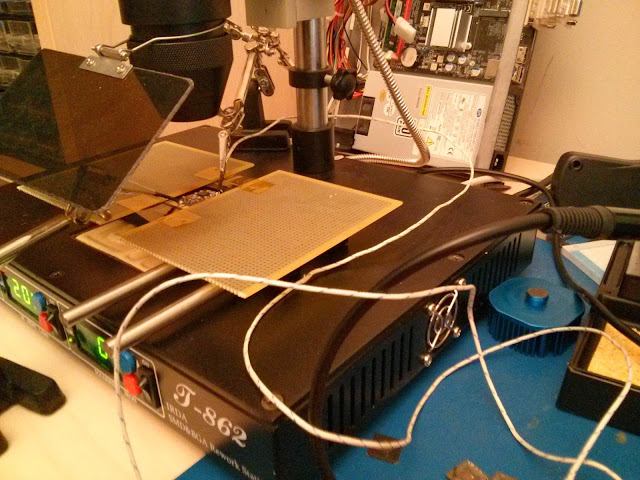I finished building the last few BGA test boards today and learned a bit. Here's an overview of my results including all six cards per component:
| Part Type | Total Qty | Qty Failed | Yield |
| 0805 | 18 | 0 | 100% |
| 0603 | 12 | 0 | 100% |
| 0605 (LED) | 48 | 2 | 95.8% |
| 0402 | 24 | 0 | 100% |
| QFN (0.65mm pitch) | 6 | 0 | 100% |
| BGA (0.5mm pitch) | 6 | 1 | 83.3% |
I was able to correct the LED soldering issues by hand; I think that the parts were a little misaligned when I placed them. The BGA issue looks like a short. I'll do some more testing to try to confirm that.
Fortunately I was able to improve my assembly process and the last three boards built were trouble-free. The most important improvement that I made while building the last three cards was to secure the stencil on only one side so that I could remove it quickly and avoid smearing the paste:
This method allowed for a very clean application of paste:
Better assembly led to prettier pictures:
























